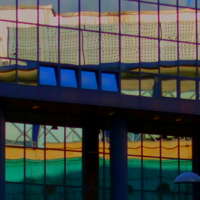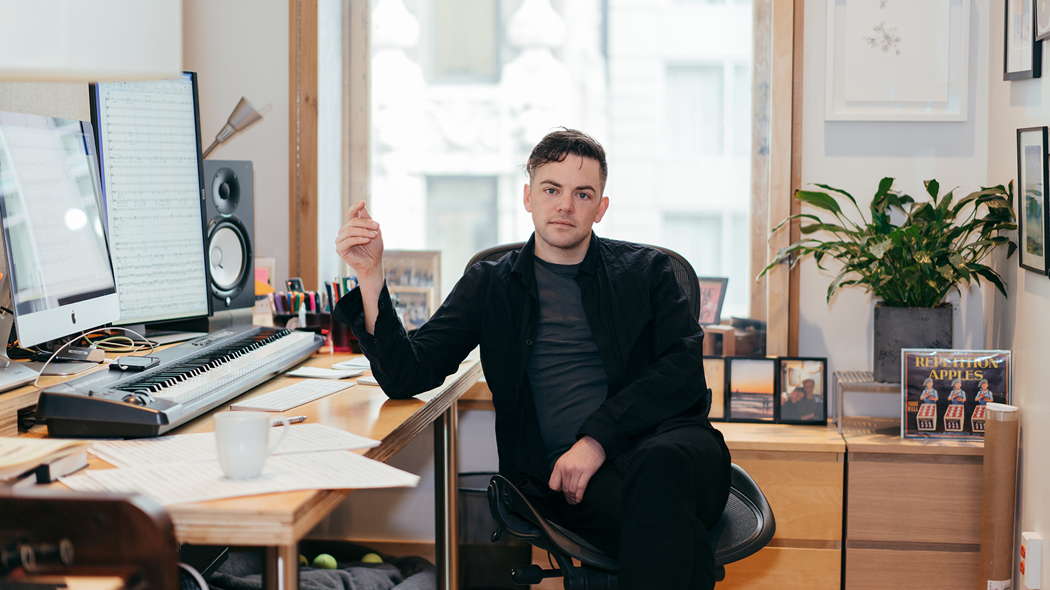 CENTRAL ENGLAND: Mike Wheeler's concert reviews from Nottingham and Derbyshire feature high profile artists on the UK circuit - often quite early on their tours.
CENTRAL ENGLAND: Mike Wheeler's concert reviews from Nottingham and Derbyshire feature high profile artists on the UK circuit - often quite early on their tours.
 DISCUSSION: What is a work? John Dante Prevedini leads a discussion about The performing artist as co-creator, including contributions from Halida Dinova, Yekaterina Lebedeva, Béla Hartmann, David Arditti and Stephen Francis Vasta.
DISCUSSION: What is a work? John Dante Prevedini leads a discussion about The performing artist as co-creator, including contributions from Halida Dinova, Yekaterina Lebedeva, Béla Hartmann, David Arditti and Stephen Francis Vasta.
 SPONSORED: CD Spotlight. A Fantastic Collection. Penelope Cave Panorama CD. Little-known harpsichord gems, strongly recommended by Alice McVeigh.
SPONSORED: CD Spotlight. A Fantastic Collection. Penelope Cave Panorama CD. Little-known harpsichord gems, strongly recommended by Alice McVeigh.
All sponsored features >>
Nico Muhly
'To the Body' forms part of the exhibition 'Yu Hong: Another One Bites the Dust' and the first performance of Muhly's work takes place today in Venice
The first performance of To the Body (2024), an immersive soundscape by American composer Nico Muhly for the exhibition Yu Hong: Another One Bites the Dust will take place today, 6 June 2024 at 5pm Central European Time at Chiesetta della Misericordia, Campo de l'Abazia 3550, Cannaregio, Venice, Italy. This will be followed by a lecture and discussion. To the Body is commissioned by Works & Process, with support from the American Academy in Rome and the New York's Guggenheim Museum's Asian Art Circle.
On 10 November 2024 at 7pm, a second live performance of To the Body will be presented by Works & Process at the Guggenheim Museum in New York, USA. Yu Hong: Another One Bites the Dust is now on view at the Chiesetta della Misericordia until 24 November 2024. The nearest vaporetto is Ca' d'Oro and the exhibition's opening hours, each week from Tuesday until Sunday, are 11am-7pm, (until 29 September) and 10am-6pm (1 October-24 November 2024).
Yu Hong: Another One Bites the Dust has been organized as an off-site programme of the Guggenheim Museum New York's Asian Art Initiative and is on view concurrently with the sixtieth International Art Exhibition – La Biennale di Venezia. Following its first performance this afternoon, Muhly's To the Body will run for the duration of the exhibition until 24 November 2024.
Presented in surround sound throughout Yu Hong's exhibition, To the Body comprises ten sections, played without pause and repeated without seam, in which fragments of Dietrich Buxtehude's 1680 cantata cycle Membra Jesu Nostri appear, disembodied from their original context. A soprano sings a Latin line that translates as:
from which gushes the spring of blood which cleans the dirty hearts
This is sung over a bed of electronically manipulated sounds, Renaissance and Baroque instruments, and other voices. The primary musical and emotional elements are memory, contortion and recontextualization; these act hand-in-hand with Yu Hong's work, as well as in counterpoint to them.
Muhly took as his departure point Yu Hong's ten-part panel painting Walking through Life (2019–22). Progressing from left to right, each arched panel depicts a scene of different physical stages of life as conditioned and contorted by social norms, gender roles, and political realities: child acrobats strain in circus acts; adolescents 'bite the dust' as they lie handcuffed, face down; young women bare themselves but hide their faces, their identities reduced to hollow constructs of social media; naked women in maturity wrap themselves in plastic, hoping to 'remold' their aging bodies; and three people and a dog wrestle in the darkness of a void. To the Body associates Walking through Life's obsessive focus on contorted and disembodied body parts with Membra Jesu Nostri's seven cantatas addressing Christ's wounds on the cross.
Muhly has remarked:
In Yu Hong's work, we are invited to pause on bodies in extreme conditions: contorted, wrapped in plastic, collapsed and bound. It's both a perversion and acknowledgement of the things we do to our own flesh, and of that which is done by others.

Nico Muhly. Photo © Heidi Solander
In relation to his composition, To the Body, Muhly writes:
While artificial manipulation of the body through contortion, injury, or extreme self-starvation is hard to depict musically, electronically manipulated sounds offer a possibility. An instrument whose range ends at middle C can be hyperextended into grotesquely beautiful stretches; a single sung line, so limited in length by biology, can be made superhuman - a sort of æolian cave of endless pulmonary capacity. Although these techniques permeate To the Body, the piece begins and ends with the oldest instrument: breath.
Alexandra Munroe, curator of Yu Hong: Another One Bites the Dust, remarks:
The curatorial vision for Yu Hong's installation at the Chiesetta della Misericordia, where panoplies of the gorgeous and grotesque surround the viewer in the architectural space, requires music to complete the immersive experience and contest with notions of sacred space that permeate Venice. Nico Muhly has responded to the tenth-century abbey church architecture and to the painter's contemporary subject of bodily existence with a composition that both draws from and twists its sources in the Baroque to produce a searingly profound piece of music.
Nico Muhly (born 1981) is an American composer who writes stage works, orchestral, film, choral, chamber and sacred music. He has received commissions from New York Metropolitan Opera - Two Boys (2011) and Marnie (2018) - among numerous other organizations, and has collaborated with choreographers Benjamin Millepied at the Paris Opera Ballet, Bobbi Jene Smith at The Juilliard School in New York, and Justin Peck and Kyle Abraham at New York City Ballet. He has also collaborated with musicians Sufjan Stevens, The National, Teitur, Anohni, James Blake and Paul Simon. He is the co-author, with Xavier F Salomon, of Paolo Veneziano's Coronation of the Virgin (Frick Collection, 2022).
Yu Hong (born Xi'an, China, 1966) lives and works in Beijing and New York. From 1984 to 1988, she studied oil painting at the Central Academy of Fine Arts (CAFA) in Beijing, and has taught in the oil painting department since her graduation. Trained in Soviet-style realism, which long dominated Chinese art academies, she is the product of a complex inheritance. Yu Hong draws from the histories of world painting as well as from the lineages of modern and contemporary art, including conceptualism and feminism, in China. She won early critical acclaim as a member of China's New Generation artists, renowned for illustrating the psychological displacement of individuals in the throes of rapid change. Over her four-decade career, Yu Hong has presented a visual accounting of contemporary life, often through the position of the female Chinese body. More recently, she engages with surreal scenes of ecological ruin, mass migration and human and animal despair, extending the implications of her epic narratives from a nation to the planet.
Posted 6 June 2024 by Keith Bramich



